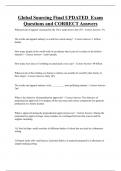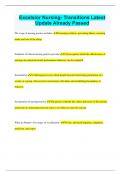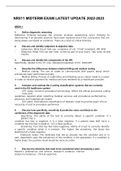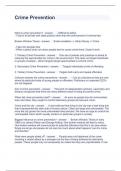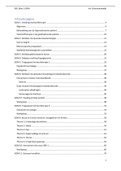Tentamen (uitwerkingen)
Global Sourcing Final UPDATED Exam Questions and CORRECT Answers
- Vak
- Instelling
Global Sourcing Final UPDATED Exam Questions and CORRECT Answers What percent of apparel consumed by the US is made here in the US? - Correct Answer- 3% The textile and apparel industry is worth how much money? - Correct Answer- 3 trillion dollars How many people in the world work in an indu...
[Meer zien]
